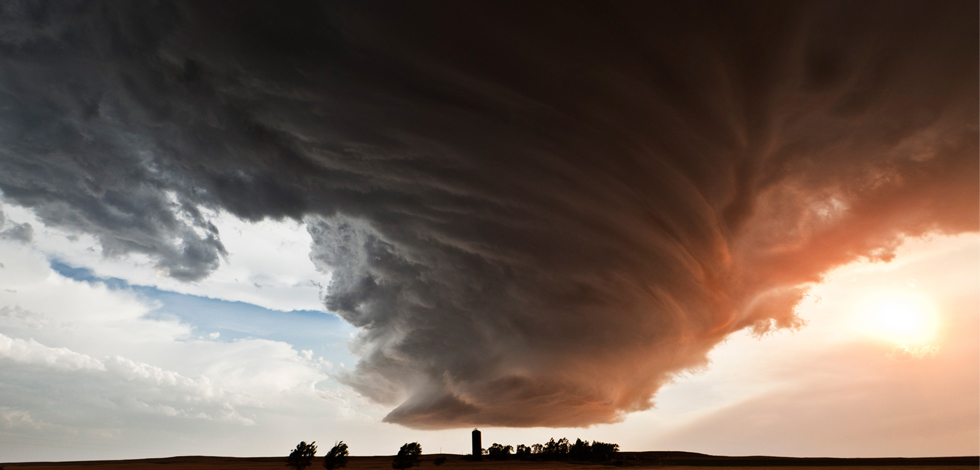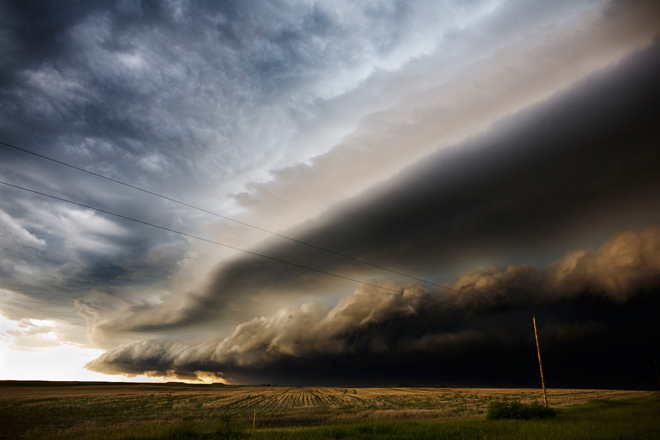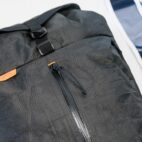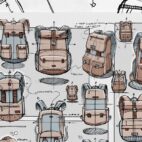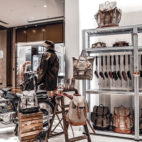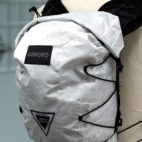Specialist Carry :: Storm Chaser
For some people an approaching storm means it’s time to head indoors and batten down the hatches, perhaps catching glimpses of nature’s display through a window as wind whips around the building. For others, such as Camille Seaman, it’s an opportunity to indulge that tingle of excitement and anticipation, a chance to witness and capture the magnificent beauty of one of the world’s most impressive natural phenomena – from a suitably respectful distance – as a photographer and storm chaser…

*All photography by Camille Seaman
When did your obsession with storms first start?
Back in 2008, I had great success with my iceberg work. And I was getting a little worried that maybe I didn’t have any other good ideas. And one day I was vacuuming the house, and my eight-year-old daughter was sitting on the couch watching Storm Chasers. And as I was vacuuming, I saw the quality of light, and I thought, “Wow, look at that!” But I also was frustrated because it seemed like they should be using either wider lenses or, you know, I wanted them to turn the camera that way or that way. And my daughter saw me looking at the TV, and she said, “Mom, you should do that!” And I said, “Yeah, I should.” And her dad said, “Well, why don’t you go Google it?”
And so, during a commercial, I went and checked out “Storm Chasing.” And it turns out it’s this whole world where you can pay professional meteorologists to drive you around on tours through Tornado Alley, chasing storms. And one website stood out amongst all the others, and it had lightning flashes across the screen and thunder sounds, and it was so nerdy I thought, “This. This is the guy I want to go with.” And I looked for the schedule for 2008, and it was completely booked full. And I was a little discouraged, but I sent him an email and said, “If anyone cancels please let me know because I am really interested in doing this.” And less than an hour later he emailed me back and said, “Can you be back here in three days? I have one spot open.” And so literally three days after my daughter saying, “Mom, you should do that,” I was in Oklahoma City and we were chasing storms.
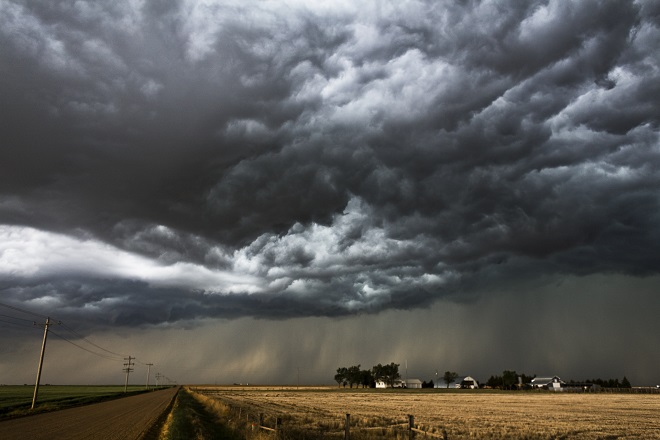
And I had no idea that it was going to be so tactile, so sensual. I mean it’s all senses; it’s smell of the earth and the charged particles, and you know that smell of the tarmac when it’s just about to rain. And there’s the wind against you and all of the colors and, of course, the lightning. And it was just fantastic. And I knew after that first trip that I was hooked and asked the guy, “Would you let me know if anybody else cancels during the season? ‘Cause I’d like to do this again.” And he said, “Well, can you drive?” And I said, “Sure!” So he said, “Well, I need a driver.” So suddenly, I was a paid professional storm chaser, after that. So that’s how it started.
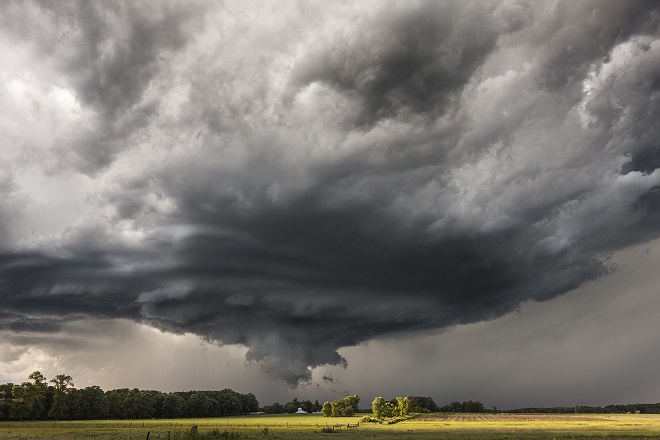
Do they have some sort of deeper meaning for you?
The storms, the clouds – all of it – I think on so many levels are amazing. On one level you get to watch. I mean, most people flee these things; they take shelter. So, it’s not that very many people who actually pursue them or try to stand in front of them. So exposing yourself to them means you get to witness things that most people don’t get to witness. And the same energy that creates these storms – this vortex energy – is the same force that created our galaxy, our solar system, our planet, our universe. And so it’s really fantastic to see it functioning right there in front of you in a smaller form. You feel very privileged to witness such a power.
Of course, there’s the destructive side of them. But, you know, there can be no creation without destruction. And so one of the reasons that the plains are so fertile is because of the storms that go through there. And these storms actually pull up the soil and charge the particles of soil with particles of water and release them back to the earth. So it’s this amazing sort of conveyor belt of energy, and life, and death. So I really appreciate that meaning.
Being raised as Shinnecock Indian, my grandfather taught us that it was our sweat that literally made those clouds, that it’s our water, that we are in a closed-loop ecosystem. So when I see these storms I can’t help but think about whose sweat is this and how many people? So that’s another aspect of the storms for me.
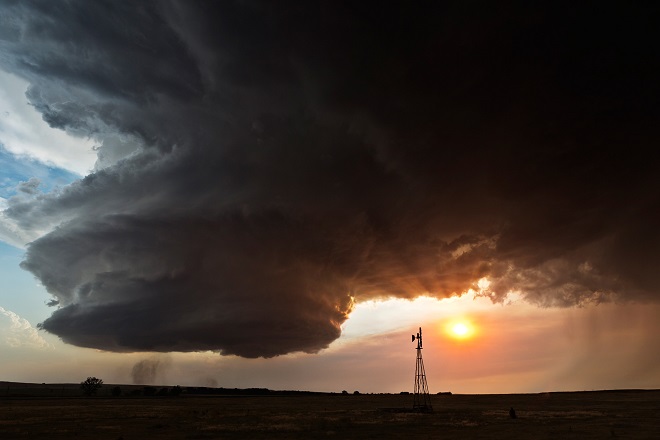
What inspires you to photograph them?
Well, spending so much time in the polar regions, I was really concerned about the melting that I was witnessing over the decade that I was there. And I started to wonder, “Well, if the Poles melt, how is that going to affect our temperate zones?” And so that was one part of it, but it was also in keeping with my desire to photograph the awesome power and beauty that exist on this planet. I wanted to show that you don’t need Photoshop to find this incredible light and colors.
Can you tell me about your first storm chase – success or flop or in-between?
My first ever storm chase was awesome! Like I said, three days after my daughter said, “You should do this!” I was doing it. And I had never seen such storms. I mean, these storms can be up to 50 miles wide and they can reach up to 65,000 feet into the atmosphere. So to stand in front of them is – if you’ve never done that before – it’s amazing. There’s a lot of time spent in the car. That is no lie. And the food is bad. And you should have a neck pillow and good headphones with some books on tape or some music.
I know there are different types of storm clouds. Which ones do you prefer to chase and why?
Yeah, I mean, I wouldn’t waste my time photographing a hurricane mostly because they are enormous. It can be over 1,000 miles wide and it’s just a lot of wind and rain – not fun, not really photogenic. And I’m not really interested in photographing devastation or destruction. So what I am looking for are super cells. And super cells are basically self-sustaining storms. They are really isolated. And when they’re isolated and the conditions are right with the jet stream, and the inflowing warm moist air from the Gulf of Mexico, they can start to rotate. And that makes them then a mesocyclone, which basically means it’s a rotating storm. And when these storms start to rotate they have a 2% chance of producing a tornado.
The tornado is not actually what I’m interested in. I prefer to see the structure of these rotating super cells. And you can see in my photos that you can have everything from what we call “mother ships” that look like spaceships, to “barber poles” that look like this swirly ice-cream thing. So for me it’s about the color, the structure, and the light. And most of the time, not always, but most of the time tornadoes are very low-contrast and can happen really when it’s very close to dark, or there isn’t very much available light. So it makes it very challenging.
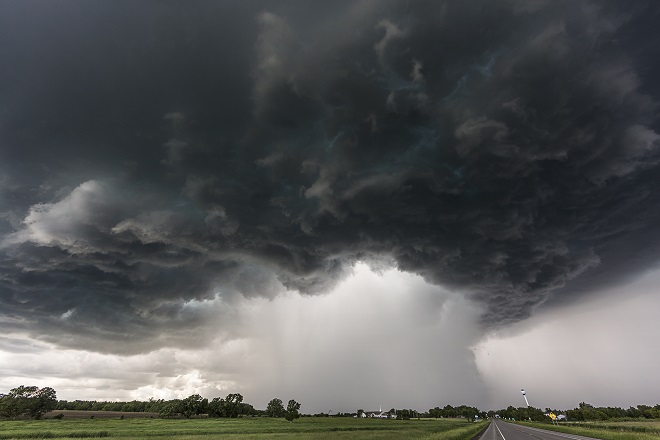
You say that storm chasing is a very tactile experience.
Well, I explained that before: the smells, the wind, the lighting, the colors…
Can you give me some tips for photographing storms?
Well, first of all, don’t go and do this yourself. It’s really dangerous. You can get killed. So do pay the money to go on a tour and learn a little bit about weather. And go with experienced people who are trustworthy, because it’s your life and no picture is worth getting hurt or killed for. So, that’s one tip.
Second is: don’t change lenses. So, have maybe one or two bodies with a wide-angle or a zoom lens. It’s pretty rare that you need to zoom, but sometimes the tornado is far away or something, or you want a detail that you want to zoom in on. But I use as wide as a 14mm full-frame lens. So that’s pretty wide. But I don’t want to go wider than that because I don’t want it to get all fisheye. A lot of people are stitching stuff together, and if that’s something you get joy out of, go ahead. I also keep a UV filter on my lens at all times just to protect the glass. I also make sure that my equipment has good waterproof seals. It can rain.
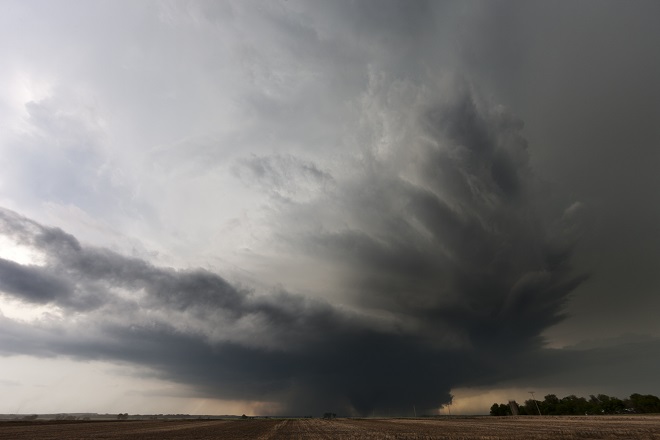
So yeah, the enemies for your gear are definitely dust (that’s why you don’t want to change your lenses), rain, hail, just getting bumped around in the car. So you want a good, easy camera bag that you can pull the camera in and out of, but that keeps it safe. And I’ve been photographing a lot more with my iPhone chasing storms. And that’s really fun, too. So make sure you keep it fun. If it’s not fun, put the camera down and just look – look with your eyes and enjoy the experience.
How do you work out your safety margin?
I am really good at trusting my intuition or my gut feeling. And I do not go with people who are interested only in punching the core, because really there’s nothing but darkness in there. I don’t have a tornado vehicle like “The TIV” or “The Dominator.” I’m not interested in having a tornado run over me. I’m not doing scientific experiments where I need to launch probes or pods. I’m a photographer. And to get the best images sometimes you actually need to be a little bit out under the cloud – the storm – because that’s where the structure is. The further underneath the storm you get, I mean, sure, there’s some interesting stuff that goes on in there, but that’s not really where the photographs are. The light just isn’t there.
So, safety margin is don’t do anything that doesn’t feel right; always make sure you have an idea of which way the storm is moving. And that’s again why you shouldn’t do this alone, because we use a lot of streaming Wi-Fi with Doppler radar laid over GPS. And sure, you can buy that equipment and do it yourself, but if you don’t understand how to read the information you can get killed.
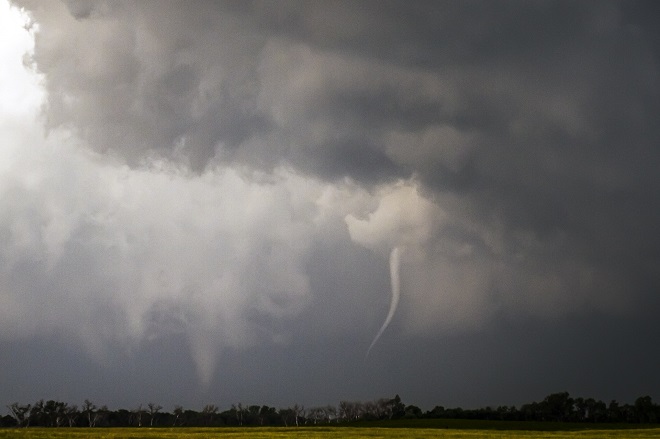
Can we see a layout photo of your gear or an itemized list?
The list would basically be: three Canon bodies. One is a 1Ds Mark III, which is a full-frame 23-megapixel, no video, still camera. A 5D Mark III, full-frame with video. And a 7D, not full-frame with video. And on those I have the 14mm lens, a 24-70mm lens, and on the 7D I will sometimes put a 100-400mm lens. I always carry my little zoom portable audio. It’s really fun to just collect some audio sometimes. Although the wind is a hassle; it doesn’t always work. I also, like I said, use my iPhone a lot to capture video and stills. And I keep handy a little microfiber towel so I can dry things off. I have a hat. I keep handy my raincoats. So I can put together a list. It’s not that exciting. I like to keep it simple, because you have to carry all this stuff around and if you don’t want to carry it you’re not going to use it. So, there’s that.
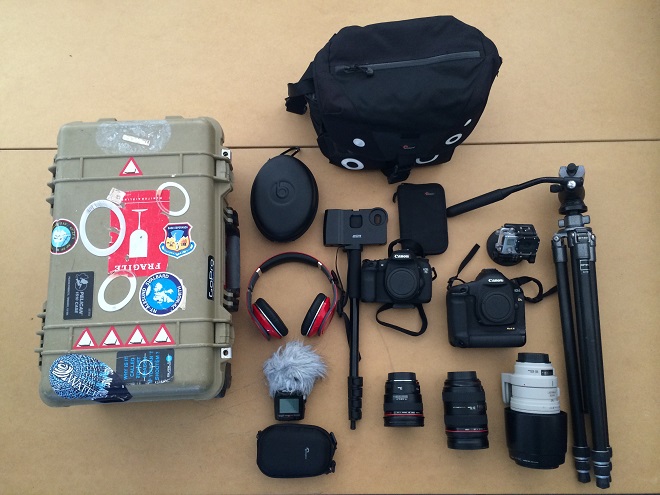
How much wind do you have around you as you chase these storms? Does that affect your gear selection? For instance, making sure there are no straps to whip around.
So of course, I want to make sure I have a camera strap on, because you don’t want to drop the camera. Yes, it can be windy. But not so windy that you’re going to get blown over. It can be too windy for a tripod sometimes. There’s usually not even enough time to set up a tripod. So while I sometimes do bring one, I very rarely actually get to use it to make still images. Usually I’m using it to make video.
How far are you willing to roam from your vehicle?
We have to be able to get into the vehicle as soon as our meteorologist/leader says, “Get in the car! Now!” So you want to be close enough that that’s not an issue. In some situations there’s a lot of visibility, and distance, and time, and so it’s a little bit more relaxed. You can walk maybe 300-1000 feet away from the vehicle. You have to also remember that there’s also a lot of fences along the road, so you may not even be able to get very far off the road. And there’s lightning, what are called CGs – Cloud-to-Ground strikes – which are deadly. So you don’t want to be in the middle of a field, and get struck by lightning as you’re making a picture.
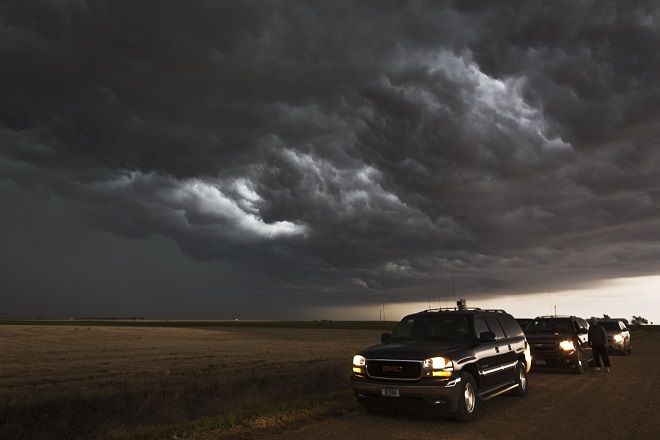
What are some myths about storm chasers?
Well, if you’ve ever seen Twister, that first – I guess it was done in the 90s; we are a sort of socially awkward bunch. It’s amazing how weather can create a tribe, but you become part of this tribe when you chase together. People come from all different corners of the globe to do this here in the United States – all different walks of life, different age groups, from teenagers all the way up to people in their 70s. So, I don’t know what the myths are. I can tell you that if you think you’re going to see a tornado every day you’re kidding yourself, although it’s not impossible.
Will an armored truck or an army tank survive these storms?
I have no idea. These things can literally pick up houses and oil tankers and launch them for half a mile to two miles. So a tank? Maybe. But an armored truck? I have no idea. You know “The TIV” is basically an armored truck and so is “The Dominator.” And they’ve spent a lot of time and money to add weight to their vehicles. I think they’re a minimum of 10,000 lbs and they have special devices that limit the amount of air that can get underneath the vehicle, because that’s what’s really going to aid in lifting it. So I think the tank might have a better chance over an armored truck, but I don’t need to test that.

What’s the single biggest lesson you’ve learned while chasing storms?
Be present, in the moment, because you never know what’s going to happen and you need to be ready when it does. Freaking out doesn’t help anybody. So, I tend to chase with very relaxed people with a lot of common sense. I’m not interested in drama.
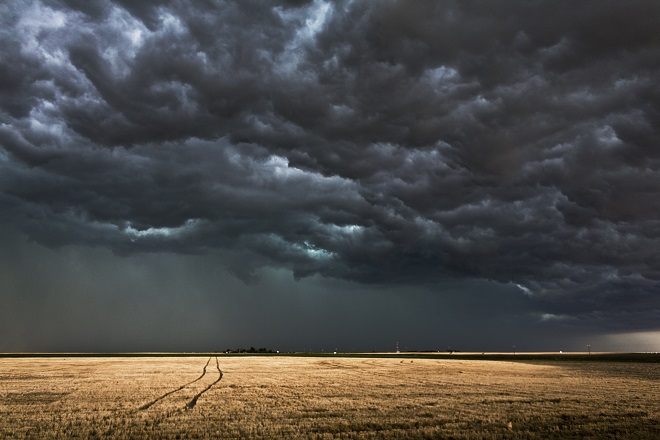
What’s the single storm-chasing moment that’s given you the biggest smile?
I don’t know if I should share this [chuckle], but it’s real life, it’s true. We were chasing this one storm in South Dakota, and we’ve been chasing it for almost ten hours. And when we are in chase mode bathroom breaks are limited, at best. We sometimes won’t stop unless it’s absolutely critical. And being a woman, we’re at a disadvantage. Where the guys can just go anywhere it’s harder for the girls, especially in the open plains of South Dakota. There are not that many things to pee behind.
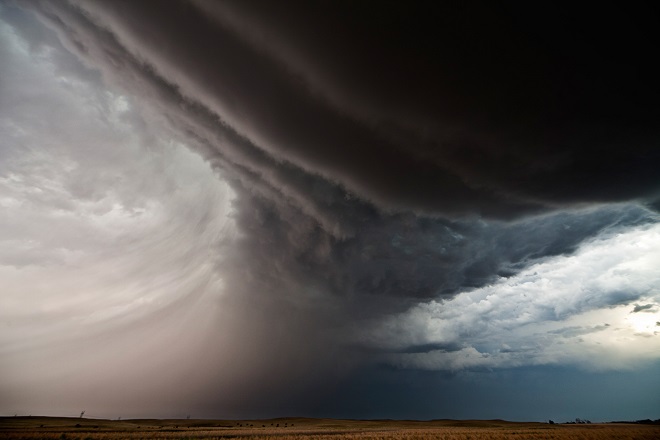
So finally we’re in this amazing – well, underneath this amazing super cell and it’s got the most beautiful mammatus clouds, and the light is just fantastic, and these massive CGs are striking down all around us. And they’re so strong that you can feel the ground shake when they hit, and they’re starting grass fires…and I had to pee so badly that I was like “I can’t! I can’t hold it in anymore! I have to go for it!” I jumped out of the vehicle and went to pee. And I just thought, “Oh God, please don’t let me get struck down by lightning with my pants down!” So, that was kind of – I was so glad that I survived that. [Chuckle] It was the most stressful pee I’ve ever had.
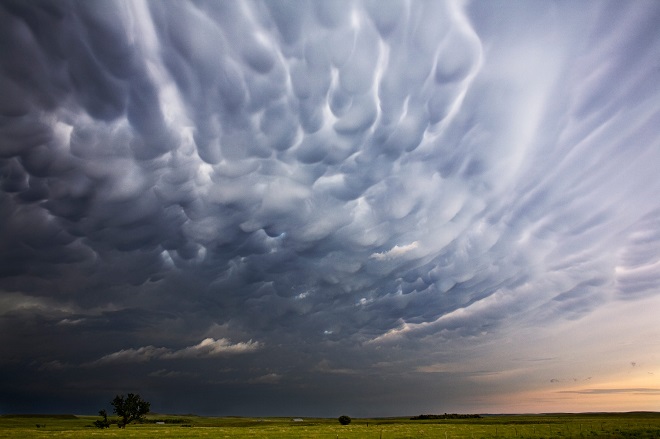
What’s next for you?
I’m still chasing storms. It’s part of a ten-year project. I like to do very long projects. So I am in my seventh year. I’ve got three more years to chase. Then I don’t know. I’m working on a project about wolves, so I’ll probably bring that online a little bit more.
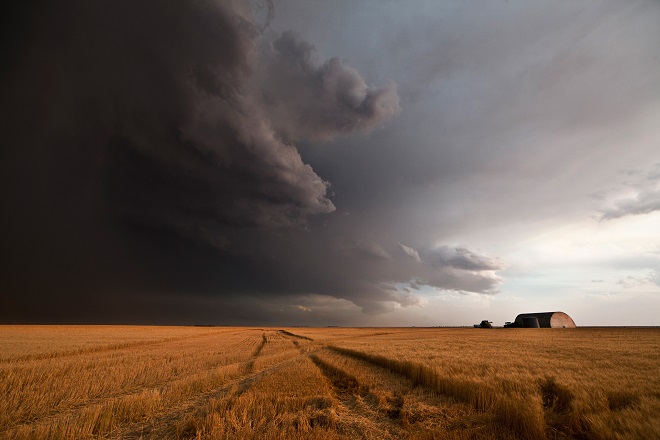
Is there anything more about storm chasing photography or the challenges you think I’ve missed?
Well, storm chasing photography is – well, there’s so many people doing it now, I think it can be really beautiful. I would really urge people to stay away from too much HDR. It’s already so nice, don’t mess with it. Just learn how to expose properly.
And have fun! Play with panoramas, whether it’s stitching them together, or with your iPhone. I really encourage playing. Don’t get so serious. And I hope that helps.
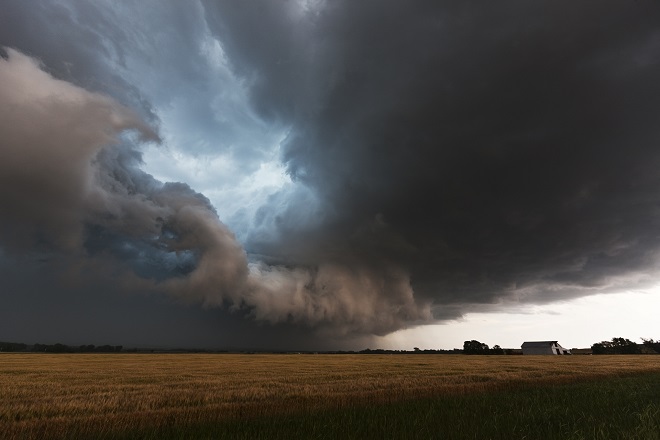





 Carry Awards
Carry Awards Insights
Insights Liking
Liking Projects
Projects Interviews
Interviews
